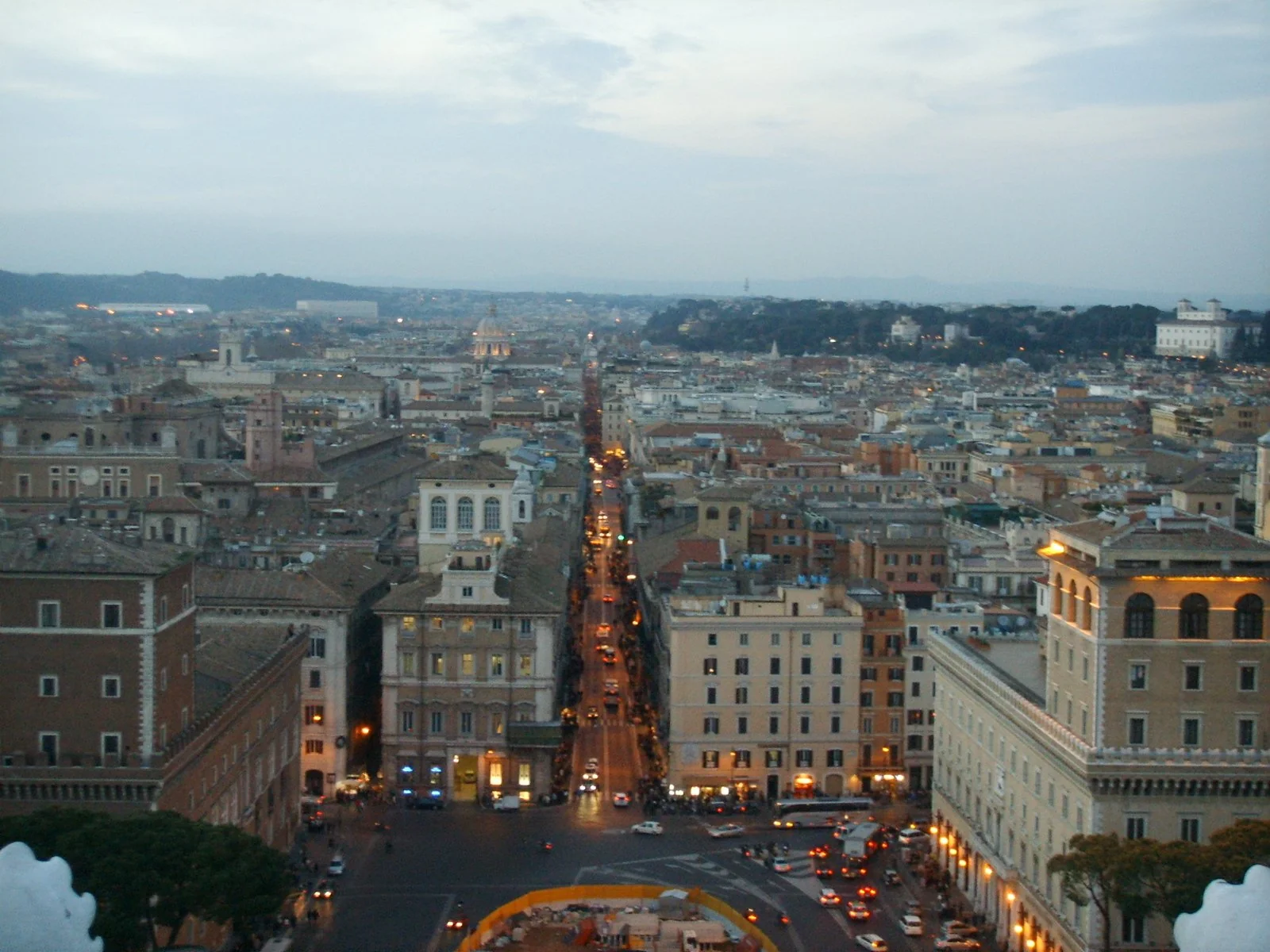Via del Corso
Rome, a magnificent, romantic city. Known worldwide for its majestic monuments and its culinary delights. It is also renowned for the friendliness and frankness of its inhabitants and its numerous tourist attractions. Staying in a hotel near Via del Corso in Rome allows you to bask in the Italian capital's splendor. Walking along the Via del Corso also offers easy access to the Trevi Fountain on one side and the Pantheon on the other, both historic must-see landmarks just minutes away from the 9Hotel Cesàri.
Traversing Majestic Rome
Guests at our hotel near Via del Corso in Rome enjoy strolling from one square to another. This major thoroughfare extends from the stunning Piazza Venezia towards Piazza del Popolo. Between these two main squares, you'll encounter fountains, churches, cobblestone alleys, and colorful side streets that give Rome its unique charm. As a quintessential historic district, there are numerous palaces on this side of the city, including Palazzo Chigi, Palazzo Rispoli, and Palazzo Doria-Pamphili. The Goethe House, now a museum dedicated to the German writer, is also located in the area.
One of the hallmarks of Via del Corso is its elegant architecture, reflecting Rome's diverse historical eras. The street boasts Renaissance, Baroque, and Neoclassical buildings, as well as historic landmarks such as the Church of Sant'Andrea della Valle and Piazza Colonna. Moreover, Via del Corso is lined with high-end fashion boutiques like Gucci, Prada, and Armani, and a plethora of souvenir shops for tourists.
Shopping in Rome
For an authentic vacation in the Italian capital, staying in a hotel near Via del Corso grants access to Rome's bustling neighborhoods. As a premier shopping street, fashion enthusiasts flock here to discover the latest collections. A neighborhood that's simultaneously upscale, trendy, and popular, it embodies a blend of styles unique to Italy. Stretching 1.5 kilometers, Via del Corso is a classic, yet essential, tourist stroll. Amidst the boutiques and beautiful churches, numerous restaurants serve regional gourmet specialties. Stopping to savor pasta or pizza is almost obligatory for hungry visitors after their explorations.
Linking Two Major Squares
After shopping, tourists in Rome often seek out other attractions. In this Italian city, there's no shortage. For those staying near Via del Corso in Rome, the surrounding beauty is captivating. The street provides a seamless blend between two of Rome's iconic squares. On one side, the colossal monument dedicated to Victor Emmanuel II offers panoramic views of Rome and Via del Corso. On the other, the Heliopolitan Obelisk stands tall, with the stunning Villa Borghese gardens nearby offering another idyllic viewpoint of the Italian capital. Rome invites leisurely strolls, and around every corner, another Roman marvel may await. Lodging near Via del Corso places visitors at the heart of Italy's capital, perfect for exploring its wonders.
History of Via del Corso
The history of Via del Corso dates back to Ancient Rome when it was used for horse racing and public processions. Over the centuries, it evolved into a bustling shopping street, offering a variety of goods for both Romans and tourists. The 19th century witnessed an architectural resurgence, with additions like the National Central Library and Valle Theatre, reaffirming its role as the city's cultural hub.
Via del Corso in Italian Literature
Over the ages, Via del Corso inspired many renowned authors, who wrote about life on this vibrant Roman street.
19th-century Roman poet Giuseppe Gioacchino Belli penned several poems about Via del Corso, capturing its daily life, lifestyles, and customs. These works remain treasured records of the street's history.
20th-century Italian writer Federico De Roberto drew inspiration from Via del Corso, crafting a novel, "I Vicerè," which depicts life in a 19th-century aristocratic Roman family. The book references Via del Corso as the city's social epicenter, brimming with cafes and theaters.
Moreover, due to its stature as a cultural nucleus in Rome, the street is home to several theaters, such as Valle Theatre and Argentina Theatre, which have staged numerous plays and musicals over the years.
A Hub for Political Activism
Via del Corso has witnessed many pivotal political events, including the popular rally supporting Italian unification in 1848.
This unification was a complex historical process in the 19th century, merging various regional states into a unified Italian nation. Before unification, Italy was a patchwork of distinct states, such as the Kingdom of Sardinia, the Grand Duchy of Tuscany, and the Kingdom of the Two Sicilies. However, by mid-century, a burgeoning movement led by figures like Camillo di Cavour and Giuseppe Garibaldi emerged, championing national unification.
The 1848 Via del Corso rally marked a crucial moment in this evolution. Primarily composed of ordinary citizens, demonstrators gathered on the street to voice their support for a united Italy and protest against the local governments resisting the idea.
Ultimately, Italian unification culminated in 1870 when the Kingdom of Sardinia was proclaimed the Kingdom of Italy. Since then, Via del Corso has remained integral to the city's and nation's political life, hosting countless political events and bearing witness to modern Italy's unfolding history.
Moreover, over the years, Via del Corso has been the epicenter of various political and social demonstrations, echoing Rome's lively spirit and strong public sentiments. The city streets, including Via del Corso, have always served as rallying points for Romans, where they can express their opinions and political convictions.


